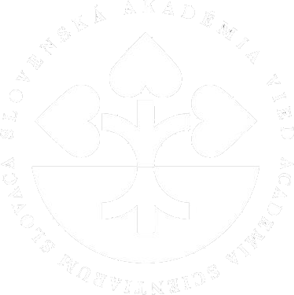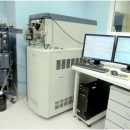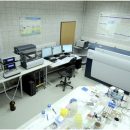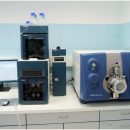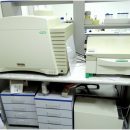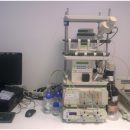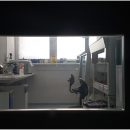Department of Rickettsiology
Research Topic
Rickettsia spp. and rickettsia-like microorganisms (including Coxiella burnetii) comprise a group that phylogenetically occupy a position between bacteria and viruses. It is formed by naturally obligatory intracellular pathogenic Gram-negative bacteria causing zoonoses. The bacteria are usually spread to humans through bites of ticks, mites, fleas, or lice which are the vectors of the infections. However, in the case of Coxiella burnetii, the bacterium is transmitted from infected animals to humans by the aerosol route. Domestic and wild animals are the common reservoirs. These animals may or may not have any symptoms of infection.
The department studies the microorganisms with the aim to:
- Elucidate the epidemiological and epizootological aspects of tick-borne microorganisms mainly from genus Rickettsia, Coxiella, Ehrlichia/Anaplasma, Borrelia, Bartonella a Babesia in relation to vectors and reservoirs (ticks, lice, mites, fleas, and wild animals)
- Map the natural foci of the pathogens in relation to developed human infection
- Isolate new species and characterize them by methods of molecular biology, serology, and immunology
- Investigate host-pathogen interrelationship
- Reveal previously unknown virulence strategies of the microorganisms.
- Elucidate the role of proteins and structural variants of lipopolysaccharide (LPS) of bacteria in virulence, pathogenesis, and immunity
- Determine the chemical structure of the sugar and lipid residues of LPS
- Evaluate adjustments in eukaryotic (mammal or plant) cells induced by stress or disease (infection/tumor) development
- Discover molecules involved in antibiotic resistance/tolerance mechanism
- Predict and systematically identify protein biomarkers, immunoreactive, and virulence-related proteins
- Fish for protein candidates (surface-associated and secreted) suitable for diagnostics of Q fever, chlamydial infections or rickettsioses
- Develop novel diagnostic tools and subunit vaccine to improve prophylaxis of these re-emerging infections.
The Department combines three research laboratories:
Research Team

Web of Science ResearcherID: N-2160-2014
ORCID: 0000-0002-9830-6459
RESEARCH FELLOWS:
Mgr. Marco Quevedo Diaz, PhD.; Web of Science ResearcherID: E-8749-2018
Mgr. Lenka Minichová, PhD.; Web of Science ResearcherID: ABA-7062-2021
RNDr. Zuzana Sekeyová, PhD.; ORCID: https://orcid.org/0000-0002-2597-4405; Web of Science ResearcherID: E-5956-2018
Mgr. Eva Špitalská, PhD.; ORCID: https://orcid.org/0000-0002-6138-7136; Web of Science ResearcherID: E-5967-2018 )
Fernando Zuñiga-Navarrete, PhD.; ORCID: https://orcid.org/0000-0001-7214-0297
RESEARCH ASSOCIATE:
MVDr. František Csicsay, PhD.; Web of Science ResearcherID: E-9592-2018
RNDr. Diana Hopková, PhD. (from July 2022); Web of Science ResearcherID: GNW-6401-2022
MVDr. Jozef Kuzma, PhD. (from July 2022); ORCID: https://orcid.org/0000-0002-4513-8172
RESEARCH ASSISTENT:
Ing. Katarína Palkovičová; Web of Science ResearcherID: F-8740-2018
Mgr. Barbora Zámocká
PhD STUDENTS:
Mgr. Shreein Ahmed; Web of Science ResearcherID: GNW-6528-2022
LABORATORY:
Renáta Szalayová
Jana Vieriková
PART-TIME EMPLOYEES:
MSc. Gabriela Flores-Ramírez, PhD.; Web of Science ResearcherID: E-6018-2018
Ing. Jaroslav Galba, PhD.
Mgr. Petra Chaľová; Web of Science ResearcherID: GOE-4660-2022
Mgr. Dominika Luptáková, PhD.; Web of Science ResearcherID: V-4189-2017
HISTORY
The research on Rickettsia spp., Coxiella burnetii and related microorganisms have been an integral part of the research program of the Institute of Virology since the early years of its existence (founded in 1953)
Former Chairs of the Department:
Rudolf Brezina, MD, Ph.D., Dr.Sc. (1953 – 1986) – founder
Jozef Řeháček, Ph.D., Dr.Sc. (1986 – 1989)
Elena Kováčová, Ph.D. (1990)
Ján Kazár, MD, Ph.D., Dr.Sc. (1991 – 1997)
Rudolf Toman, Ph.D., Dr.Sc. (1997– 2001)
International Projects
Multilateral
| DANOMICS – Danube meets omics | |
| Program: | APVV – Danube region |
| Principal investigator: | Ing. Škultéty Ľudovít, DrSc. |
| Duration: | 1.1.2017 – 31.12.2018 |
| Q fever biomarker discovery using innovative immunoproteomic and metabolomic approaches | |
| Program: | International Visegrad Fund – standard |
| Principal investigator ans coordinator: | Ing. Škultéty Ľudovít, DrSc. |
| Duration: | 1.9.2016 – 31.8.2017 |
Bilateral
| RICKDET – Detection and Characterization of Rickettsiae and Similar Microorganisms | |
| Program: | Bilateral – other |
| Principal investigator: | RNDr. Zuzana Sekeyová, PhD. |
| Duration: | 1.1.2018 – 31.12.2019 |
List of projects funded from other competitive sources
| Structural characterisation and anotation of gene cluster of C. burnetii lipoplysaccharide | |
| Program: | National Research Platform for Zoonoses |
| Co-applicant and partner: | Ing. Škultéty Ľudovít, DrSc. |
| Duration: | 1.9.2015 – 31.12.2016 |
National Projects
List of projects of the Slovak Research and Development Agency (APVV)
| Host cell interaction with Coxiella burnetii: identification and utilization of novel therapeutic and diagnostic targets | |
| Program: | APVV |
| Principal investigator: | Ing. Škultéty Ľudovít, DrSc. |
| Duration: | 1.7.2020 – 30.6.2024 |
| Preparation of erythropoietin a therapeutic hormone affecting the production of red blood cells by expression in eukaryotic cell system and its further purification, selected among the outstanding | |
| Program: | APVV |
| Principal investigator: | Ing. Škultéty Ľudovít, DrSc. |
| Duration: | 1.7.2015 – 30.6.2019 |
| The role of neuropeptides and receptors in regulation of pathogen transfer from ticks to their hosts | |
| Program: | APVV |
| Co-applicant and partner: | Mgr. Eva Špitalská, PhD. |
| Duration: | 1.7.2015 – 30.6.2019 |
| Ecology of host specificity in vector-borne parasites | |
| Program: | APVV |
| Co-applicant and partner: | Mgr. Eva Špitalská, PhD. |
| Duration: | 1.7.2017 – 30.6.2021 |
| Research of biomarkers for diagnosis of rickettsiae, Coxiella burnetii and related organisms by state-ofart immunoproteomic and molecular biologic methods | |
| Program: | APVV |
| Principal investigator: | RNDr. Zuzana Sekeyová, PhD. |
| Duration: | 1.10.2013 – 30.9.2017 |
| RICTRANSPROT – Investigation of the host – parasite, cell – Rickettsia relationship, monitored by transcriptomic and proteome studies | |
| Program: | APVV |
| Principal investigator: | RNDr. Zuzana Sekeyová, PhD. |
| Duration: | 1.7.2020 – 30.6.2024 |
| Role of microenvironment and B-cell immunity in the spontaneous regression of MM patients undergoing high dose therapy and autologous stem cell transplantation | |
| Program: | APVV |
| Principal investigator: | MUDr. Ján Lakota, PhD. |
| Duration: | 1.10.2013 – 30.6.2017 |
| MMSR – Disclosure of the molecular mechanism of spontaneous tumor regression followed by the development of novel prognostic tool | |
| Program: | APVV |
| Principal investigator: | Mgr. Lenka Minichová, PhD. |
| Duration: | 1.7.2019 – 30.6.2023 |
List of projects of the Scientific Grant Agency of the Slovak Academy of Sciences and the Ministry of Education (VEGA)
| Diversity of vector-borne pathogenic and non-pathogenic microorganisms and potential therapy of zoonotic diseases caused by them | |
| Program: | VEGA |
| Principal investigator: | Mgr. Eva Špitalská, PhD. |
| Duration: | 1.1.2021 – 31.12.2024 |
| Development of a lateral flow assay for the diagnosis of zoonotic disease: Q fever | |
| Program: | VEGA |
| Principal investigator: | MSc. Gabriela Flores-Ramírez, PhD. |
| Duration: | 1.1.2021 – 31.12.2024 |
| RICKCOXDIAG – Rickettsiae and Coxiella burnetii, bacterial triggers of the “mysterious“ diseases | |
| Program: | VEGA |
| Principal investigator: | RNDr. Zuzana Sekeyová, PhD. |
| Duration: | 1.1.2019 – 31.12.2022 |
| New insight into the phase variation phenomenon of Coxiella burnetii | |
| Program: | VEGA |
| Principal investigator: | Ing. Škultéty Ľudovít, DrSc. |
| Duration: | 1.1.2019 – 31.12.2022 |
| Development of monoclonal antibodies of Rickettsiae and their employment in diagnosis assay | |
| Program: | VEGA |
| Principal investigator: | Mgr. Marco Quevedo Diaz, PhD. |
| Duration: | 1.1.2019 – 31.12.2022 |
| Discovery of clinically relevant proteins and their application in more reliable diagnostics of Q fever | |
| Program: | VEGA |
| Principal investigator: | MSc. Gabriela Flores-Ramírez, PhD. |
| Duration: | 1.1.2018 – 31.12.2020 |
| Pathogens and endosymbionts as components of the natural environment of the bloodsucking ectoparasites | |
| Program: | VEGA |
| Principal investigator: | Mgr. Eva Špitalská, PhD. |
| Duration: | 1.1.2017 – 31.12.2020 |
| The effect of selected natural compounds of plant origin (essential oils) on Rickettsiae and ticks | |
| Program: | VEGA |
| Principal investigator: | Mgr. Katarína Štefanidesová, PhD. |
| Duration: | 1.1.2016 – 31.12.2019 |
| Development of Rickettsia antibodies detection system using an enzyme immunological assay | |
| Program: | VEGA |
| Principal investigator: | Mgr. Marco Quevedo Diaz, PhD. |
| Duration: | 1.1.2016 – 31.12.2018 |
| Proteomic analyses of the interaction of host with pathogenic bacterium Coxiella burnetii | |
| Program: | VEGA |
| Principal investigator: | Ing. Škultéty Ľudovít, DrSc. |
| Duration: | 1.1.2015 – 31.12.2018 |
| Evaluation of the protein expression of Coxiella burnetii in response to antibiotic resistance | |
| Program: | VEGA |
| Principal investigator: | MSc. Gabriela Flores-Ramírez, PhD. |
| Duration: | 1.1.2015 – 31.12.2017 |
| Polyphasic analysis of molecular data obtained by examining of the Rickettsiae, Coxiella burnetii and similar microorganisms | |
| Program: | VEGA |
| Principal investigator: | RNDr. Zuzana Sekeyová, PhD. |
| Duration: | 1.1.2015 – 31.12.2017 |
| The role of birds and mammals in the circulation of vector-borne bacteria and blood parasites in urban and sylvatic foci | |
| Program: | VEGA |
| Principal investigator: | Mgr. Eva Špitalska, PhD. |
| Duration: | 1.1.2013 – 31.12.2016 |
- Molnár T, Bartošová M, Antošová M, Škultéty Ľ, Polakovič M. Design of a three-step chromatographic process of recombinant human erythropoietin purification. Sep Purif Technol. 2021 Jul 15; 267:118673. doi: 10.1016/j.seppur.2021.118673.
- Špitalská E, Boldišová E, Štefanidesová K, Kocianová E, Majerčíková Z, Tarageľová VR, Selyemová D, Chvostáč M, Derdáková M, Škultéty Ľ. Pathogenic microorganisms in ticks removed from Slovakian residents over the years 2008-2018. Ticks Tick Borne Dis. 2021 Mar;12(2):101626. doi: 10.1016/j.ttbdis.2020.101626. Epub 2020 Dec 13. PMID: 33385938.
- Lakhneko O, Danchenko M, Morgun B, Kováč A, Majerová P, Škultéty Ľ. Comprehensive Comparison of Clinically Relevant Grain Proteins in Modern and Traditional Bread Wheat Cultivars. Int J Mol Sci. 2020 May 13;21(10):3445. doi: 10.3390/ijms21103445. PMID: 32414116; PMCID: PMC7279209.
- Csicsay F, Flores-Ramirez G, Zuñiga-Navarrete F, Bartošová M, Fučíková A, Pajer P, Dresler J, Škultéty Ľ, Quevedo-Diaz M. Proteomic analysis of Rickettsia akari proposes a 44 kDa-OMP as a potential biomarker for Rickettsialpox diagnosis. BMC Microbiol. 2020 Jul 8;20(1):200. doi: 10.1186/s12866-020-01877-6. PMID: 32640994; PMCID: PMC7341715.
- Pernis M, Skultety L, Shevchenko V, Klubicova K, Rashydov N, Danchenko M. Soybean recovery from stress imposed by multigenerational growth in contaminated Chernobyl environment. J Plant Physiol. 2020 Aug;251:153219. doi: 10.1016/j.jplph.2020.153219. Epub 2020 Jun 10. PMID: 32563765.
- Simko V, Belvoncikova P, Csaderova L, Labudova M, Grossmannova K, Zatovicova M, Kajanova I, Skultety L, Barathova M, Pastorek J. PIMT Binding to C-Terminal Ala459 of CAIX Is Involved in Inside-Out Signaling Necessary for Its Catalytic Activity. Int J Mol Sci. 2020 Nov 12;21(22):8545. doi: 10.3390/ijms21228545. PMID: 33198416; PMCID: PMC7696048.
- Štefanidesová K, Špitalská E, Csicsay F, Friedländerová V, Šáner A, Škultéty Ľ. Evaluation of the possible use of genus Mentha derived essential oils in the prevention of SENLAT syndrome caused by Rickettsia slovaca. J Ethnopharmacol. 2019 Mar 25;232:55-61. doi: 10.1016/j.jep.2018.12.005. Epub 2018 Dec 6. PMID: 30529423.
- Bánová Vulić R, Zdurienčíková M, Tyčiaková S, Benada O, Dubrovčáková M, Lakota J, Škultéty Ľ. Silencing of carbonic anhydrase I enhances the malignant potential of exosomes secreted by prostatic tumour cells. J Cell Mol Med. 2019 May;23(5):3641-3655. doi: 10.1111/jcmm.14265. Epub 2019 Mar 27. PMID: 30916466; PMCID: PMC6484292.
- Klimenko O, Pernis M, Danchenko M, Skultéty L, Klubicová K, Shevchenko G. Natural ecotype of Arabidopsis thaliana (L.) Heynh (Chernobyl-07) respond to cadmium stress more intensively than the sensitive ecotypes Oasis and Columbia. Ecotoxicol Environ Saf. 2019 May 30;173:86-95. doi: 10.1016/j.ecoenv.2019.02.012. Epub 2019 Feb 12. PMID: 30769207.
- Pecimonova M, Kluckova D, Csicsay F, Reblova K, Krahulec J, Procházkova D, Skultety L, Kadasi L, Soltysova A. Structural and Functional Impact of Seven Missense Variants of Phenylalanine Hydroxylase. Genes (Basel). 2019 Jun 15;10(6):459. doi: 10.3390/genes10060459. PMID: 31208052; PMCID: PMC6628251.
- Flores-Ramirez G, Sallay B, Danchenko M, Lakhneko O, Špitalská E, Skultety L. Comparative proteomics of the vector Dermacentor reticulatus revealed differentially regulated proteins associated with pathogen transmission in response to laboratory infection with Rickettsia slovaca. Parasit Vectors. 2019 Jun 24;12(1):318. doi: 10.1186/s13071-019-3564-y. PMID: 31234913; PMCID: PMC6591964.
- Sekeyová Z, Danchenko M, Filipčík P, Fournier PE. Rickettsial infections of the central nervous system. PLoS Negl Trop Dis. 2019 Aug 29;13(8):e0007469. doi: 10.1371/journal.pntd.0007469. PMID: 31465452; PMCID: PMC6715168.
- Zuñiga-Navarrete F, Flores-Ramirez G, Danchenko M, Benada O, Skriba A, Skultety L. Proteomic analysis revealed the survival strategy of Coxiella burnetii to doxycycline exposure. J Proteomics. 2019 Sep 30;208:103479. doi: 10.1016/j.jprot.2019.103479. Epub 2019 Aug 5. PMID: 31394312.
- Zúniga-Navarrete F, Flores-Ramirez G, Quevedo-Díaz M, Škultéty L. Counting of viable C. burnetii cells by quantitative reverse transcription PCR using a recombinant plasmid (pCB-dotA) as a standard. Acta Virol. 2018;62(4):409-414. doi: 10.4149/av_2018_409. PMID: 30472871.
- Vulic R, Tyciakova S, Dubrovcakova M, Skultety L, Lakota J. Silencing of CA1 mRNA in tumour cells does not change the gene expression of the extracellular matrix proteins. J Cell Mol Med. 2018 Jan;22(1):695-699. doi: 10.1111/jcmm.13315. Epub 2017 Aug 7. PMID: 28782909; PMCID: PMC5742735.
- Špitalská E, Sparagano O, Stanko M, Schwarzová K, Špitalský Z, Škultéty Ľ, Havlíková SF. Diversity of Coxiella-like and Francisella-like endosymbionts, and Rickettsia spp., Coxiella burnetii as pathogens in the tick populations of Slovakia, Central Europe. Ticks Tick Borne Dis. 2018 Jul;9(5):1207-1211. doi: 10.1016/j.ttbdis.2018.05.002. Epub 2018 May 3. PMID: 29748120.
- Kazimírová M, Hamšíková Z, Špitalská E, Minichová L, Mahríková L, Caban R, Sprong H, Fonville M, Schnittger L, Kocianová E. Diverse tick-borne microorganisms identified in free-living ungulates in Slovakia. Parasit Vectors. 2018 Sep 3;11(1):495. doi: 10.1186/s13071-018-3068-1. PMID: 30176908; PMCID: PMC6122462.
- Peptu C, Danchenko M, Škultéty Ľ, Mosnáček J. Structural Architectural Features of Cyclodextrin Oligoesters Revealed by Fragmentation Mass Spectrometry Analysis. Molecules. 2018 Sep 5;23(9):2259. doi: 10.3390/molecules23092259. PMID: 30189595; PMCID: PMC6225376.
- Nováková S, Danchenko M, Skultety L, Fialová I, Lešková A, Beke G, Flores-Ramírez G, Glasa M. Photosynthetic and Stress Responsive Proteins Are Altered More Effectively in Nicotiana benthamiana Infected with Plum pox virus Aggressive PPV-CR versus Mild PPV-C Cherry-Adapted Isolates. J Proteome Res. 2018 Sep 7;17(9):3114-3127. doi: 10.1021/acs.jproteome.8b00230. Epub 2018 Aug 22. PMID: 30084641.
- Štefanidesová K, Škultéty Ľ, Friedländerová V, Šáner A, Špitalská E. The effect of wild thyme and bergamot essential oils on the growth of Rickettsia slovaca and Rickettsia conorii caspia in Vero cell line. Travel Med Infect Dis. 2018 Nov-Dec;26:69-71. doi: 10.1016/j.tmaid.2018.10.009. Epub 2018 Oct 11. PMID: 30316918.
- Rezuchova B, Homerova D, Sevcikova B, Núñez LE, Novakova R, Feckova L, Skultety L, Cortés J, Kormanec J. An efficient blue-white screening system for markerless deletions and stable integrations in Streptomyces chromosomes based on the blue pigment indigoidine biosynthetic gene bpsA. Appl Microbiol Biotechnol. 2018 Dec;102(23):10231-10244. doi: 10.1007/s00253-018-9393-7. Epub 2018 Sep 26. PMID: 30259098.
- Špitalská E, Špitalský Z, Markovic Z, Štefanidesová K, Škultéty Ľ. Low-cost light-induced therapy to treat rickettsial infection. Photodiagnosis Photodyn Ther. 2018 Dec;24:150-152. doi: 10.1016/j.pdpdt.2018.09.018. Epub 2018 Sep 29. PMID: 30278280.
- Sallay B, Vaculová T, Derdáková M, Rusňáková Tarageľová V, Špitalská E, Škultéty Ľ. Two mice models for transferability of zoonotic bacteria via tick vector. Acta Virol. 2017;61(3):372-376. doi: 10.4149/av_2017_319. PMID: 28854805.
- Gerlach C, Škultéty Ľ, Henning K, Neubauer H, Mertens K. Coxiella burnetii immunogenic proteins as a basis for new Q fever diagnostic and vaccine development. Acta Virol. 2017;61(3):377-390. doi: 10.4149/av_2017_320. PMID: 28854806.
- Flores-Ramírez G, Kmeťová M, Danchenko M, Špitalská E, Havlíček V, Škultéty Ľ. Protein composition of the phase I Coxiella burnetii soluble antigen prepared by extraction with trichloroacetic acid. Acta Virol. 2017;61(3):361-368. doi: 10.4149/av_2017_317. PMID: 28854803.
- Flores-Ramírez G, Danchenko M, Quevedo-Díaz M, Skultety L. Reliable tool for detection of novel Coxiella burnetii antigens, using immobilized human polyclonal antibodies. J Chromatogr B Analyt Technol Biomed Life Sci. 2017 Mar 15;1047:84-91. doi: 10.1016/j.jchromb.2016.08.044. Epub 2016 Aug 31. PMID: 27639449.
- Minichová L, Hamšíková Z, Mahríková L, Slovák M, Kocianová E, Kazimírová M, Škultéty Ľ, Štefanidesová K, Špitalská E. Molecular evidence of Rickettsia spp. in ixodid ticks and rodents in suburban, natural and rural habitats in Slovakia. Parasit Vectors. 2017 Mar 24;10(1):158. doi: 10.1186/s13071-017-2094-8. PMID: 28340608; PMCID: PMC5366151.
- Peptu C, Balan-Porcarasu M, Šišková A, Škultéty Ľ, Mosnáček J. Cyclodextrins tethered with oligolactides – green synthesis and structural assessment. Beilstein J Org Chem. 2017 Apr 26;13:779-792. doi: 10.3762/bjoc.13.77. PMID: 28546834; PMCID: PMC5433207.
- Skultety L, Frycak P, Qiu C, Smuts J, Shear-Laude L, Lemr K, Mao JX, Kroll P, Schug KA, Szewczak A, Vaught C, Lurie I, Havlicek V. Resolution of isomeric new designer stimulants using gas chromatography – Vacuum ultraviolet spectroscopy and theoretical computations. Anal Chim Acta. 2017 Jun 8;971:55-67. doi: 10.1016/j.aca.2017.03.023. Epub 2017 Mar 22. PMID: 28456284.
- Štefanidesová K, Škultéty Ľ, Sparagano OAE, Špitalská E. The repellent efficacy of eleven essential oils against adult Dermacentor reticulatus ticks. Ticks Tick Borne Dis. 2017 Aug;8(5):780-786. doi: 10.1016/j.ttbdis.2017.06.003. Epub 2017 Jun 15. PMID: 28645519.
- Klubicová K, Uvácková L, Danchenko M, Nemecek P, Skultéty L, Salaj J, Salaj T. Insights into the early stage of Pinus nigra Arn. somatic embryogenesis using discovery proteomics. J Proteomics. 2017 Oct 3;169:99-111. doi: 10.1016/j.jprot.2017.05.013. Epub 2017 May 17. PMID: 28526530.
- Pecimonova M, Polak E, Csicsay F, Reblova K, Stojiljkovic M, Levarski Z, Skultety L, Kadasi L, Soltysova A. Functional and structural characterisation of 5 missense mutations of the phenylalanine hydroxylase. Gen Physiol Biophys. 2017 Oct;36(4):361-371. doi: 10.4149/gpb_2017003. Epub 2017 Jun 27. PMID: 28653649.
- Štefanidesová K, Škultéty Ľ, Sparagano OAE, Špitalská E. The repellent efficacy of eleven essential oils against adult Dermacentor reticulatus ticks. Ticks Tick Borne Dis. 2017 Aug;8(5):780-786. doi: 10.1016/j.ttbdis.2017.06.003. Epub 2017 Jun 15. PMID: 28645519.
- Garajová K, Zimmermann M, Petrenčáková M, Dzurová L, Nemergut M, Škultéty Ľ, Žoldák G, Sedlák E. The molten-globule residual structure is critical for reflavination of glucose oxidase. Biophys Chem. 2017 Nov;230:74-83. doi: 10.1016/j.bpc.2017.08.009. Epub 2017 Sep 1. PMID: 28887045.
- Špitalská E, Minichová L, Kocianová E, Škultéty Ľ, Mahríková L, Hamšíková Z, Slovák M, Kazimírová M. Diversity and prevalence of Bartonella species in small mammals from Slovakia, Central Europe. Parasitol Res. 2017 Nov;116(11):3087-3095. doi: 10.1007/s00436-017-5620-x. Epub 2017 Oct 3. PMID: 28975409.
- Gábrišová D, Klubicová K, Danchenko M, Gömöry D, Berezhna VV, Skultety L, Miernyk JA, Rashydov N, Hajduch M. Do Cupins Have a Function Beyond Being Seed Storage Proteins? Front Plant Sci. 2016 Jan 13;6:1215. doi: 10.3389/fpls.2015.01215. PMID: 26793203; PMCID: PMC4711306.
- Bohacsova M, Mediannikov O, Kazimirova M, Raoult D, Sekeyova Z. Arsenophonus nasoniae and Rickettsiae Infection of Ixodes ricinus Due to Parasitic Wasp Ixodiphagus hookeri. PLoS One. 2016 Feb 22;11(2):e0149950. doi: 10.1371/journal.pone.0149950. PMID: 26901622; PMCID: PMC4762546.
- Frimmelová M, Toman R, Pompach P, Škultéty L. Modifications in the glycerophospholipid composition between the Coxiella burnetii phase I and phase II cells suggest an association with phase variation of the bacterium. Acta Virol. 2016 Mar;60(1):27-33. doi: 10.4149/av_2016_01_27. PMID: 26982464.
- Valáriková J, Sekeyová Z, Škultéty L, Bohácsová M, Quevedo-Diaz M. New way of purification of pathogenic rickettsiae reducing health risks. Acta Virol. 2016 Jun;60(2):206-10. doi: 10.4149/av_2016_02_206. PMID: 27265472.
SERVICES
Within the framework of scientific and technical cooperation with SMEs, the laboratory for Diagnosis and Prevention of Rickettsial and Chlamydial Infections of the Department of Rickettsiology develops experimental vaccines against coxiellosis and chlamydial infections in livestock, goats or sheep. It also produces antigens and hyperimmune sera especially for immunological detection of Coxiella burnetii and Chlamydophila.
More information you can find HERE.
The executive laboratory of NRC in the frame of public services provides a rapid and reliable detection of Rickettsia spp. and rickettsia-like organisms (Borrelia, Rickettsia, Anaplasma, Bartonella, and Babesia) using molecular biology and/or serologic methods. Fees are generally charged on a per-sample basis.
The proteomic laboratory is focused on interdisciplinary studies that require the state-of-art mass spectrometry technology for identification, relative quantification, and structure/function characterization of biologically active macromolecules. Particularly, we focuss on those molecules that can be associated with stress response or disease (infection/tumor) development. Results of these studies may provide unique insight into host-pathogen interrelationship and reveal previously unknown virulence strategies of the microorganisms. The noticeable impact can be also achieved by investigations of the role of molecules involved in disease development or altered in response to abiotic stress factors.
The specialists of the laboratory continuously develop and improve methods for:
- sample preparation (protein extraction, enzymatic digestion, biofunctionalized nanoparticles)
- electrophoretic and chromatographic (multidimensional) separations of proteins and peptides
- mass spectrometric detection and quantification
- statistical and bioinformatical characterization, and
- determination of posttranslational modification and their localization.
The laboratory provides scientific services for research groups at the BMC SAS, as well as contractual work for other academic, governmental or industrial partners. More information you can find HERE.
Pictures:
Obr. 1:
Tandem mass spectrometer Q-TOF Premier (Waters) with nano UHPLC nanoAcquity (Waters) – this system is suitable for the comparative discovery proteomics.
Obr. 2:
Tandem mass spectrometer MALDI TOF-TOF Ultraflextreme (Bruker) with two-dimensional capillary/nano UHPLC Ultimate 3000 (Thermo Scientific) – this system is suitable for the protein identification and profiling of complex samples.
Obr. 3:
Tandem mass spectrometer QTRAP 4500 (Sciex) with capillary HPLC Exigent expert ultra 100 (Sciex) – this system is suitable for the targeted sensitive quantification of proteins and other biomolecules.
Obr. 4:
Universal imaging system Pharos FX molecular imager (Bio-Rad) with EXQuest spot cutter (Bio-Rad) – this equipment is capable of difference in-gel electrophoresis (DIGE).
Obr. 5:
UHPLC Acquity M-class (Waters) – this system is suitable for multi-dimensional chromatographic separation of peptides, proteins, amino acids, etc.
Obr. 6:
GCMS (Agilent Technologies) – this system is suitable for separation and identification of thermostable volatile substances
Obr. 7:
FPLC BioLogic (BioRad) – this equipment is suitable for chromatographic purification of macromolecules (proteins, immunoglobulins, etc.)
Obr. 8:
The specialized laboratory operating under biosafety level 3 conditions
THE MOST IMPORTANT OUTPUTS
- Identification of surface-exposed and cell envelope-associated proteins of Coxiella burnetii. Using three enrichment protocols, we identified several molecules predicted as outer membrane proteins (OMP), lipoproteins (LP), effectors of the Type IV secretion system, and proteins with moonlighting activities.
- Proteomic comparison of virulent phase I and avirulent phase II of C. burnetii. In addition to identified molecules which may be associated with pathogenicity of C. burnetii, we proposed the enzymes distinctively present only in phase I cells and involved in LPS biosynthesis or metabolism as virulence-associated.
- Detection of candidate proteins for serodiagnostic of Q fever. Several antigenic proteins were identified by mass spectrometry techniques. Two proteins – arginine repressor and OmpH were recognized exclusively by the sera of patients with Q fever endocarditis (chronic Q fever).
- Determination of the chemical structure of unique biomarkers virenose (Vir) and dihydro hydroxy streptose (Strep). The enantiomeric forms and ring conformations of these unique sugars were established from the optical rotation and NMR data. Virenose was found to be the D-gulo enantiomer with the 4C1 ring conformation and dihydro-hydroxy-streptose was shown to be the L-lyxo enantiomer also with the 4C1 conformation.
- Disclosure of the biosynthetic pathway of the unique burnetii biomarker, virenose. Two pathways similar to that of other C-3’-methylated deoxysugars were proposed for the synthesis of Virenose which depends on the nucleotide-carrier involved.
- Isolation of a novel species named Diplorickettsia massiliensis. This obligate intracellular gamma-proteobacterium was isolated from the actively questing hard tick Ixodes ricinus using mammalian and amphibian cell lines. It belongs to the family Coxiellaceae, order Legionellales, and its closest relatives are some Rickettsiella spp.
- Elucidation of the epidemiological and epizootological aspects of tick-borne microorganisms. Ecological studies that focus on the circulation of slovaca, R. helvetica, R. raoultii, Anaplasma phagocytophilum, and Borrelia burgdorferi in Slovakia were performed to evaluate their relationship with human infections and their vectors or reservoirs
- Contribution to the understanding of pathogenicity and virulence of slovaca. Using quantitative real-time PCR we identified the highest point of multiplication of wild and standard type (strain B) of R. slovaca.
- Development of an experimental vaccine against Q fever. We clarified the protein and LPS composition of a subunit vaccine against Q fever that is based on trichloroacetic acid extract. Consequently, the LPS I polymer isolated from burnetii was bound to a tetanus toxoid carrier protein and successfully tested as a conjugate vaccine.
- Discovery of stress-related proteins affecting plant growth. To mitigate the damaging effects of adverse environmental conditions, the plants have evolved various adaptive strategies accompanied by dynamic changes in protein abundance. We have applied the conventional proteomic workflow based on a two-dimensional gel electrophoresis (2-DE) to (I) Elucidate virus resistance strategies in zucchini and Nicotiana benthamiana and (II) Clarify the mystery behind successful growth of flax in a radio-contaminated environment at Chernobyl.
- Understanding the spontaneous tumor regression phenomenon associated by high titer of autoantibodies against Carbonic anhydrase I. It was found that autoantibodies against these “obscure” enzyme play important role in regression of tumor and elicit changes in the composition of the extracellular matrix. In contrast, the adjustments in the protein composition of exosome due to knockdown of CAI mRNA enhances the malignant potential of the tumor cells.
Press:
Generali Balans: Sajú krv a šíria choroby. Kliešte netreba podceniť
Generali Balans: Všetko podstatné o kliešťovi-radí virologička
SME: Vedci zo SAV vyvinuli nové metódy diagnostiky chlamýdiových infekcií
Pravda: Hľadá sa zbraň na tichých zabijakov
SME: Vedci budú v Bratislave diskutovať o bioterorizme
SME: Nebezpečné rickettsie opäť na scéne
Markíza 8.9.2016 Reflex, 9.9.2017 Reflex (Repríza): Nebezpečné kliešte
Vrbovce: Krásne ale nebezpečné kliešte 3.10.2017
Dúbravské noviny 06-2018: Kliešťa možno poslať na analýzu.
Another press releases on collaborative research projects with our partners:
SME: V zamorenom Černobyle sa darí rastlinám
NASA (Astrobiology magazine): Radiation No Concern for Space Crops?
CNN: Chernobyl: Environmental dead zone or eco-haven?
SME: Slovenskú vedu citujú svetové media
The New York Times: Plants Near Chernobyl Appear to Grow a Shield
BBC: Chernobyl plant life endures radioactivity
C&EN: How Crops Battle Nuclear Fallout
Science Daily: Discovery of the Secrets That Enable Plants Near Chernobyl to Shrug Off Radiation
London Wired: Innate mechanisms help Chernobyl plants endure radiation
Pravda: Príroda si napokon poradí aj s jadrovou katastrofou
Science NOW: How Plants Survived Chernobyl
Journal of Proteome Research (interview): Proteomics of Chernobyl-grown seeds gives hints about adaptation to radiation
New Scientist: Chernobyl fallout could drive the evolution of ‘space plants’ (2009)
Discovery channel: How Could the Chernobyl Disaster Help Us Grow Plants on Mars?
Wired Science: Soybeans Grow Where Nuclear Waste Glows
Contact:
Department of Rickettsiology
Institute of Virology
Biomedical Research Center, v.v.i.
Slovak Academy of Sciences
Dubravska cesta 9
845 05 Bratislava
Slovak Republic
email: viruludo@savba.sk
tel: +421 2/59 302 418 alebo 430






